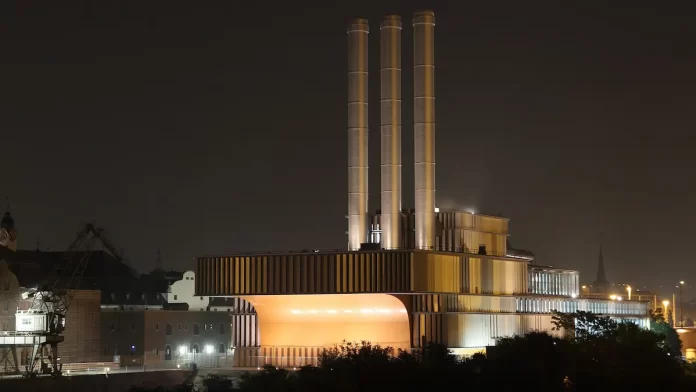Waste management is a global challenge that continues to grow in complexity as urban populations increase and consumption patterns change.
To address this challenge, waste-to-energy (WtE) technologies have emerged as a crucial solution that not only minimizes the environmental impact of waste but also harnesses its potential as a valuable energy resource.
In this article, we will explore the latest advancements in waste-to-energy technologies, highlighting innovations that promise a more sustainable and cleaner future.
Anaerobic Digestion
Anaerobic digestion is a biological process that breaks down organic waste, such as food scraps and sewage sludge, in the absence of oxygen. It produces biogas, primarily composed of methane and carbon dioxide, which can be used as a renewable energy source. The latest developments in anaerobic digestion include:
- High-Solid Anaerobic Digestion: This innovation allows for the digestion of materials with higher solid content, making the process more efficient and versatile.
- Two-Stage Anaerobic Digestion: Combining two different types of reactors to optimize the breakdown of organic matter and maximize biogas production.
- Nutrient Recovery: Advanced anaerobic digestion systems can recover valuable nutrients like phosphorus and nitrogen, reducing the environmental impact of waste discharge.
Incineration
Waste incineration involves the controlled burning of waste materials to generate heat, which is then used to produce electricity or steam. Modern incineration technologies incorporate several improvements:
- Waste-to-Energy Plants: These facilities utilize advanced combustion techniques, such as fluidized bed incineration, to improve efficiency and reduce emissions.
- Air Pollution Control: Advanced filtration and scrubbing systems minimize the release of harmful pollutants like dioxins and heavy metals.
- Energy Recovery: Integrated heat recovery systems capture and utilize heat generated during incineration, increasing overall efficiency.
Pyrolysis and Gasification
Pyrolysis and gasification are thermal processes that break down waste materials at high temperatures in the absence of oxygen. They offer several advantages, including reduced emissions and the production of valuable syngas (synthetic gas). The latest advancements include:
- Plasma Arc Gasification: This cutting-edge technology uses a plasma arc to reach even higher temperatures, effectively converting waste into syngas with minimal emissions.
- Syngas Upgrading: Techniques for cleaning and upgrading syngas to make it suitable for various applications, including electricity generation and chemical production.
- Carbon Capture: Integrated carbon capture and utilization (CCU) processes to reduce greenhouse gas emissions and convert captured carbon into valuable products.
Waste-to-Biofuels
Waste-to-biofuels technologies aim to convert organic waste materials into biofuels, such as biodiesel, bioethanol, and biogas. Key advancements in this field include:
- Algae Biofuel Production: Algae can be cultivated using wastewater or CO2 emissions and converted into biofuels, providing a sustainable source of renewable energy.
- Waste Plastic to Fuel: Innovative processes can convert non-recyclable plastic waste into synthetic fuels, reducing plastic pollution and fossil fuel dependence.
- Methanol Production: Methanol, a versatile biofuel, can be synthesized from various waste materials, offering a cleaner alternative to traditional fuels.
Waste-to-Hydrogen
Hydrogen is a clean energy carrier that can be produced from various waste materials. Recent developments in waste-to-hydrogen technologies include:
- Thermochemical Hydrogen Production: Processes like steam methane reforming and gasification can produce hydrogen from organic waste materials or methane-rich biogas.
- Biological Hydrogen Production: Microbial systems are being explored to generate hydrogen from organic waste, such as agricultural residues and wastewater.
- Hydrogen Fuel Cells: Combining waste-derived hydrogen with fuel cells to generate electricity, with water as the only byproduct.
Advanced Sorting and Recycling
Improving waste sorting and recycling processes is an essential part of the waste-to-energy ecosystem. Innovations include:
- Robotic Sorting: Autonomous robots equipped with AI and computer vision systems can efficiently sort recyclables from mixed waste streams.
- Chemical Recycling: Advanced chemical processes that break down plastics into their constituent monomers, allowing for better recycling and reducing plastic waste.
- Smart Waste Management: IoT-based systems for real-time monitoring of waste bins, optimizing collection routes, and reducing waste-related emissions.
Integrated Waste Management Systems
The future of waste-to-energy lies in integrated waste management systems that combine various technologies to maximize resource recovery and minimize environmental impact.
These systems leverage advanced sensors, data analytics, and automation to optimize every step of the waste management process, from collection and sorting to energy production and recycling.
Challenges and Considerations
While these latest waste-to-energy technologies offer promising solutions to the growing waste problem, they also come with challenges and considerations:
- Environmental Impact: Striking a balance between waste reduction, energy generation, and environmental protection remains a challenge. Emissions, air quality, and waste byproducts must be carefully managed.
- Economic Viability: The cost-effectiveness of these technologies depends on factors like scale, location, and feedstock availability. Economic incentives and policies play a crucial role in their adoption.
- Regulatory Framework: Governments need to establish and enforce regulations that ensure the safe and sustainable operation of waste-to-energy facilities.
- Public Perception: Building public trust and acceptance is essential, as some waste-to-energy technologies have faced opposition from communities concerned about potential environmental and health impacts.
- Resource Management: Efficient waste management requires not only technology but also effective resource allocation, waste reduction strategies, and education.
Conclusion
The latest advancements in waste-to-energy technologies hold significant promise in addressing the global waste crisis while contributing to cleaner energy production.
As sustainability becomes increasingly vital, these innovations are expected to play a crucial role in our transition to a more circular and environmentally responsible economy.
However, it’s crucial to approach these technologies with a comprehensive understanding of their environmental, economic, and societal implications, ensuring that they are implemented and regulated wisely to maximize their benefits and minimize potential risks.
